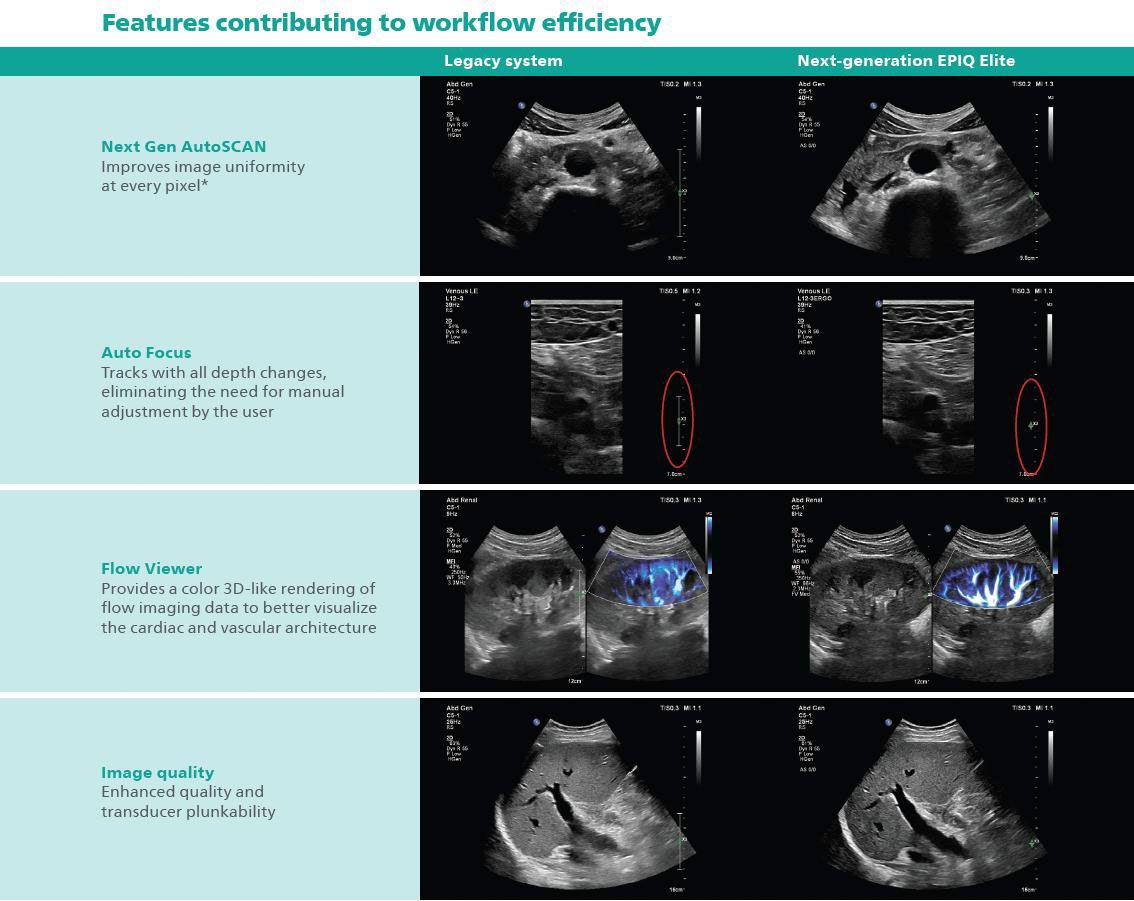
Achieving end-to-end efficiency in ultrasound workflow
- By |
- March 17 2025
- 1 min read
Achieving end-to-end efficiency in ultrasound workflow EPIQ Elite and Affiniti ultrasound systems
Download this white paper to read the results of a workflow study conducted to determine how recent enhancements to the Philips EPIQ Elite and Philips Affiniti ultrasound systems can help produce significant savings in the time and effort needed to complete a successful, standardized ultrasound exam.
At-a-glance:
- A study compared workflow efficiency measured during standardized ultrasound exam protocols.
- The exams were completed using the next-generation release of the EPIQ Elite ultrasound system compared to the legacy EPIQ Elite ultrasound system.
- Higher efficiency was seen with the next-generation EPIQ Elite system, resulting a significant reduction of imaging button pushes.

Background
The dynamic healthcare environment requires that imaging exams be conducted as quickly and efficiently as possible while delivering high-quality results. EPIQ Elite and Affiniti ultrasound systems streamline workflow with end-to-end efficiency advances that help create enhanced experiences for users and patients alike. The objective of the study was to compare workflow efficiency measured during standardized ultrasound exam protocols completed using the next-generation release of the EPIQ Elite ultrasound system compared to the legacy EPIQ Elite ultrasound system.
Method

Departmental efficiency by sonographer: button presses needed to complete a successful exam (Improvements seen in 84% of exams)
The study was performed using EPIQ Elite ultrasound machines. Affiniti and EPIQ Elite share a common user interface. Ten subjects were scanned by each of the five sonographers on both current and legacy systems, resulting in a total number of approximately 100 exams.* Workflow efficiency was measured using software that recorded scan time and the number of button pushes to complete the exam.
Results
Per-subject analysis of the button pushes demonstrated higher efficiency with the next-generation EPIQ Elite system, resulting a significant reduction of imaging button pushes of -53.95% [-60.65%, -47.24%] compared to the legacy system (p<0.0001). Fewer button pushes were needed during the entire exam in 84% of the exams.** A consistently high satisfaction score, averaging 4.6 out of 5.0, was achieved for overall image quality, including image uniformity during changes of image depth and image quality of the vessel lumen.
Capabilities contributing to workflow efficiency
Next Gen AutoSCAN is the driver of Philips advances in workflow efficiency. It improves image uniformity, adaptively adjusting brightness at every pixel. This reduces the need for manual adjustment while also allowing for increased transducer plunkability.

Copy this URLto share this story with your professional network
Sign up for news and updates

Disclaimer
*Four lower extremity vascular exams were excluded from the analysis because of an error in data collection.
**When comparing Release 10.0 to Release 7.0